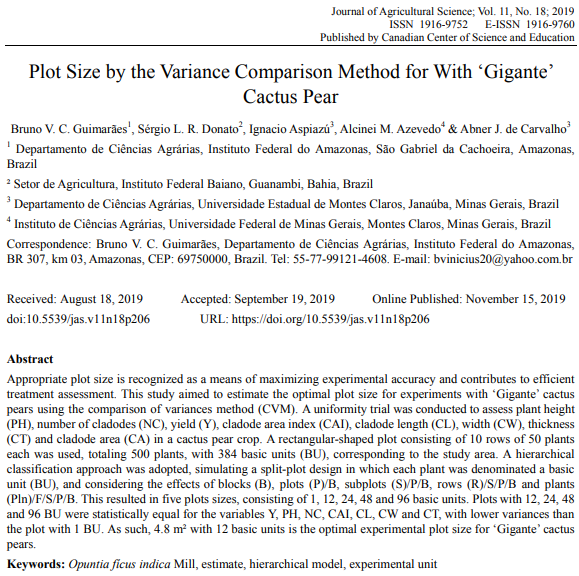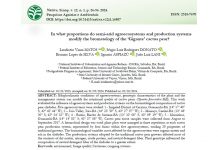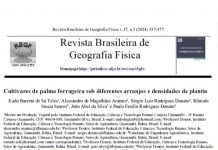Appropriate plot size is recognized as a means of maximizing experimental accuracy and contributes to efficient treatment assessment. This study aimed to estimate the optimal plot size for experiments with ‘Gigante’ cactus pears using the comparison of variances method (CVM). A uniformity trial was conducted to assess plant height (PH), number of cladodes (NC), yield (Y), cladode area index (CAI), cladode length (CL), width (CW), thickness (CT) and cladode area (CA) in a cactus pear crop. A rectangular-shaped plot consisting of 10 rows of 50 plants each was used, totaling 500 plants, with 384 basic units (BU), corresponding to the study area. A hierarchical classification approach was adopted, simulating a split-plot design in which each plant was denominated a basic unit (BU), and considering the effects of blocks (B), plots (P)/B, subplots (S)/P/B, rows (R)/S/P/B and plants (Pln)/F/S/P/B. This resulted in five plots sizes, consisting of 1, 12, 24, 48 and 96 basic units. Plots with 12, 24, 48 and 96 BU were statistically equal for the variables Y, PH, NC, CAI, CL, CW and CT, with lower variances than the plot with 1 BU. As such, 4.8 m² with 12 basic units is the optimal experimental plot size for ‘Gigante’ cactus pears.
Keywords: Opuntia ficus-indica Mill, estimate, hierarchical model, experimental unit.





